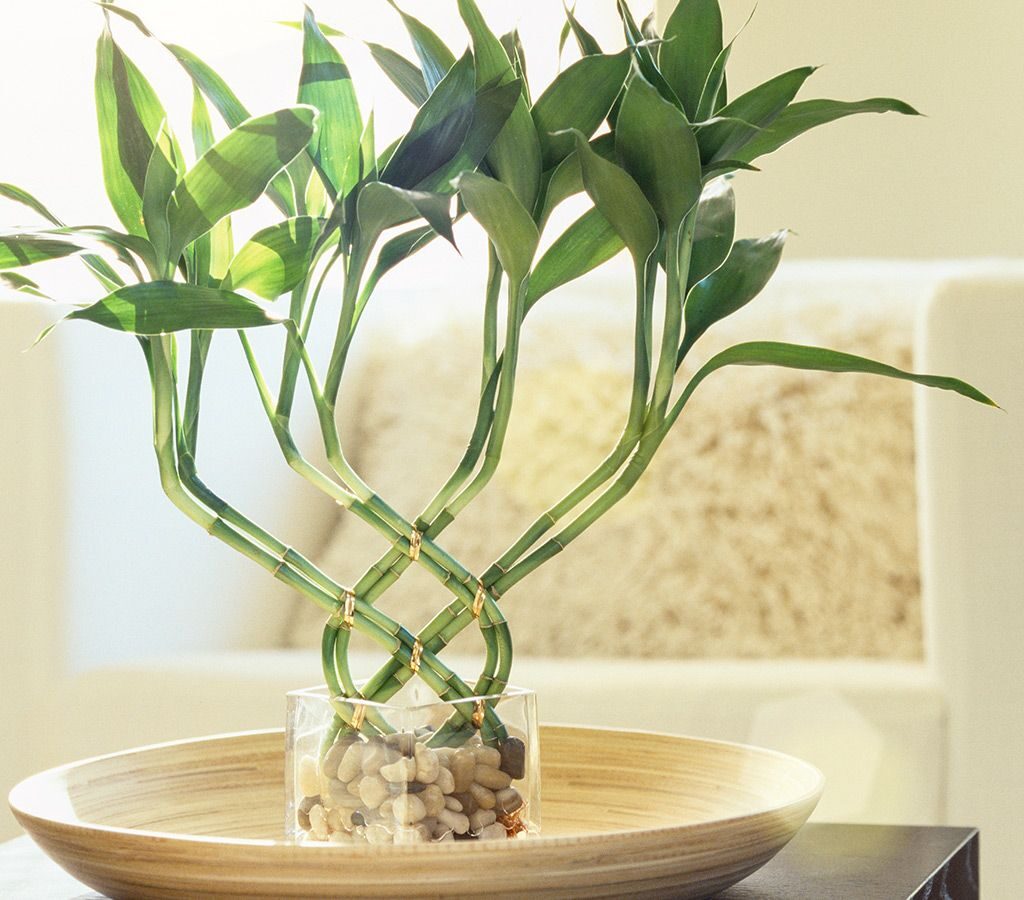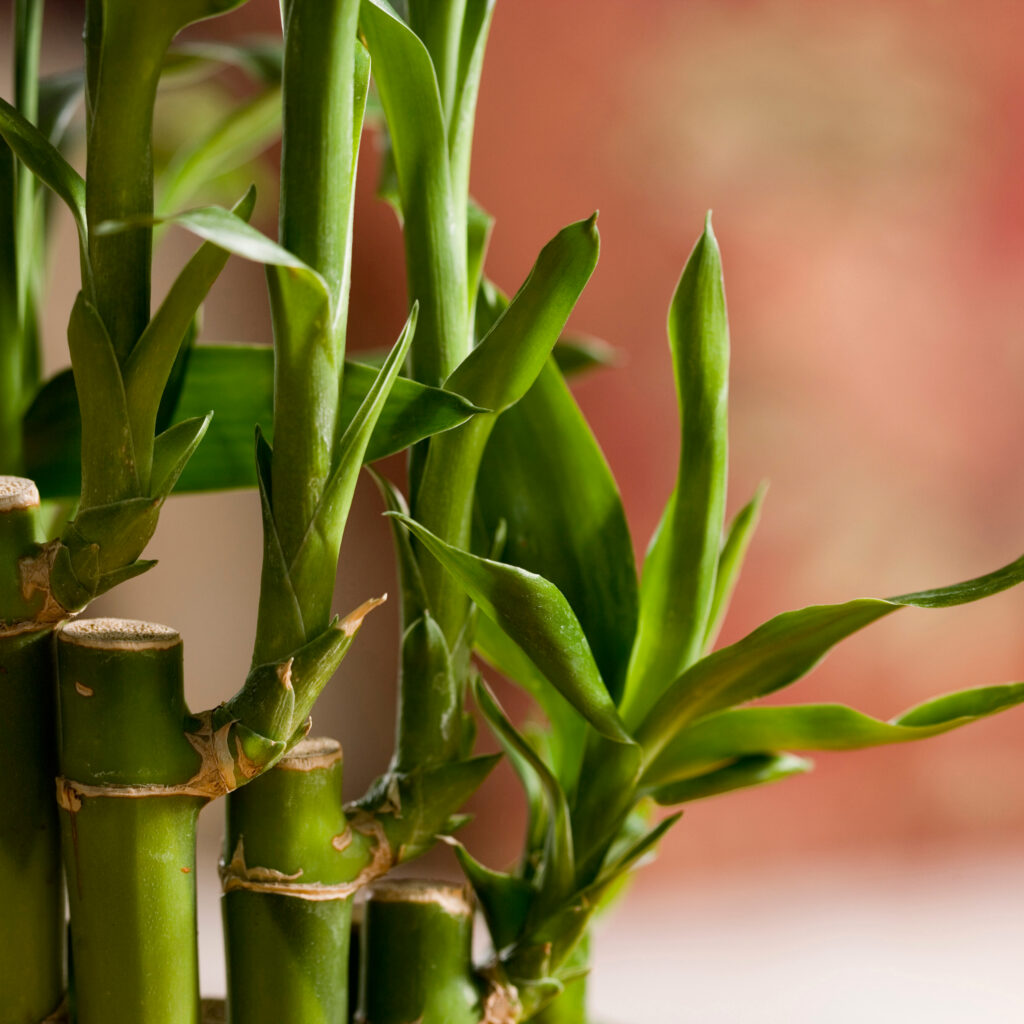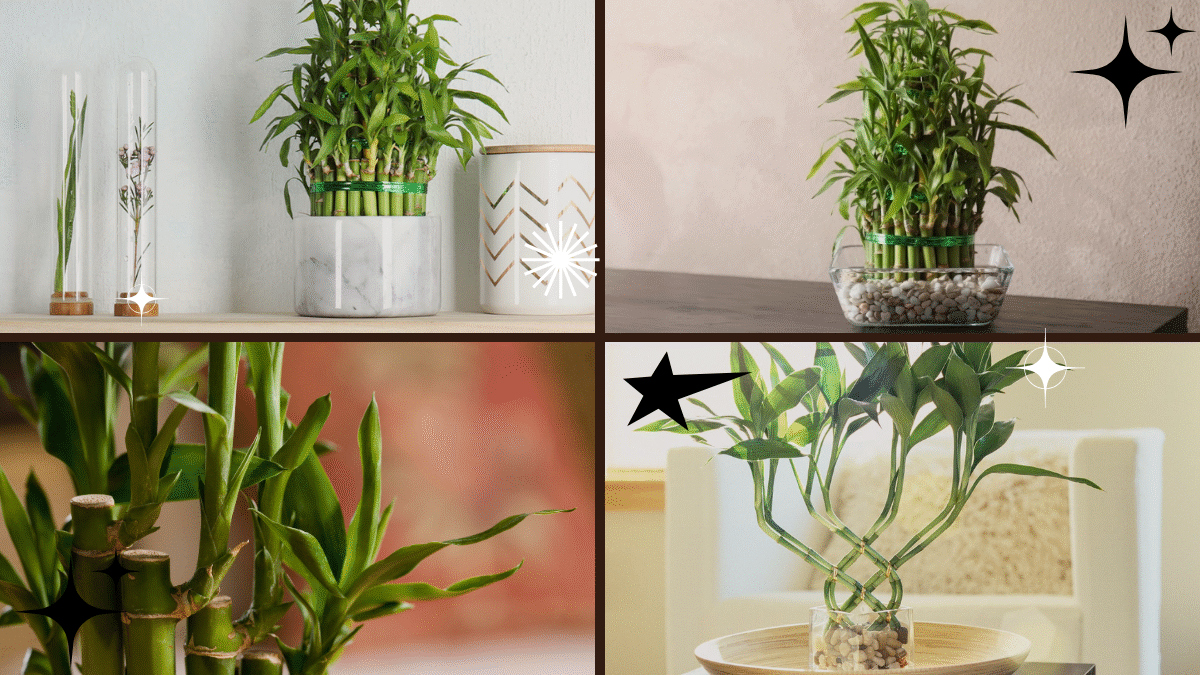Indoor plants are not only a beautiful way to decorate your home, but they also purify the air and bring a touch of nature indoors. Among the easiest and most charming houseplants you can grow is the bamboo plant. Whether you’ve received one as a gift or picked one up yourself, this versatile and resilient plant is famous for symbolizing good fortune, peace, and prosperity.
In this detailed guide, we’ll show you how to take care of a bamboo plant indoors, ensuring it stays healthy, lush, and vibrant for years to come.

What is an Indoor Bamboo Plant?
When people talk about indoor bamboo, they’re typically referring to Lucky Bamboo (Dracaena sanderiana) — not the giant outdoor variety. Despite its name, Lucky Bamboo isn’t a true bamboo, but it closely resembles it with its slender, upright stalks and leafy tops. It’s adaptable, attractive, and perfect for homes or offices.

Benefits of Growing Bamboo Indoors
Before we dive into the care details, here’s why bamboo plants are worth having indoors:
- Low-maintenance and beginner-friendly.
- Can thrive in low-light environments.
- Grows well in water or soil.
- Symbolizes good luck, wealth, and health in Feng Shui.
- Acts as a natural air purifier.
- Adds a calming, Zen-like feel to your home.
Types of Indoor Bamboo Arrangements
You’ll find indoor bamboo in a few popular styles:
- Single Stalks: Minimalist, clean look.
- Braided or Twisted Stalks: A decorative, artistic arrangement.
- Clustered Bunches: Full, lush appearance.
- Layered Designs: Often used in Feng Shui arrangements.

How to Care for a Bamboo Plant Indoors
Now let’s dive into the key elements of proper bamboo plant care.
1. Choosing the Right Spot
Bamboo plants prefer bright, indirect light. Too much direct sunlight can scorch their leaves, while too little light can stunt growth.
Ideal placement:
- Near an east- or north-facing window.
- On a desk or shelf with filtered light.
- Avoid dark corners and spots next to heating vents or cold drafts.
Pro Tip: Rotate the plant occasionally so all sides receive light evenly, encouraging straight, even growth.
2. Growing Bamboo in Water vs. Soil
One of the unique things about indoor bamboo is its ability to grow in both water and soil. Here’s how to manage each option:
Growing in Water:
- Use a glass vase or ceramic container.
- Fill with clean, filtered, or distilled water to submerge the roots.
- Avoid tap water with chlorine and fluoride, which can harm the plant.
- Anchor the stalks with pebbles or stones for support.
- Change the water every 7–10 days to prevent algae and bacteria.
Growing in Soil:
- Choose a well-draining, loamy potting mix.
- Use a pot with good drainage holes.
- Water when the top inch of soil feels dry.
- Keep the soil consistently moist, but never waterlogged.
3. Water Quality and Frequency
Water quality is critical for indoor bamboo, especially for those grown in water.
- Use distilled or filtered water to avoid mineral build-up.
- If using tap water, let it sit overnight to allow chlorine to evaporate.
- Keep roots submerged, but don’t flood the entire plant.
- Water soil-grown bamboo when the surface feels dry.
Important: Avoid letting water stagnate or become cloudy, as it can cause root rot.
4. Ideal Temperature and Humidity
Bamboo plants thrive in warm, humid conditions.
- Temperature range: 65°F to 90°F (18°C to 32°C).
- Avoid placing it near drafts, air conditioners, or heaters.
- Mist the leaves occasionally if indoor air is dry, especially in winter.
5. Fertilizing Your Bamboo Plant
Bamboo plants don’t require heavy fertilization.
For plants in water:
- Use a few drops of liquid houseplant fertilizer every 6–8 weeks.
- Avoid over-fertilizing, which can turn leaves yellow.
For plants in soil:
- Apply a diluted, balanced liquid fertilizer once a month during the growing season (spring and summer).
6. Pruning and Shaping
Regular pruning helps maintain the plant’s appearance and health.
- Use clean, sharp scissors to trim yellowing leaves or overgrown stalks.
- Remove dead leaves at the base.
- To control height, cut stalks above a node (the raised ring on the stem).
- You can also tie stalks together for creative arrangements.
7. Repotting and Transplanting
If your bamboo outgrows its container:
- Repot it into a slightly larger container with fresh water or soil.
- Gently rinse the roots when transferring to avoid disease.
- Replace any pebbles or decorative stones to keep the setup clean.
When to repot: Every 1–2 years, or when roots become crowded.

Common Indoor Bamboo Plant Problems and Solutions
Even though bamboo is low-maintenance, it can encounter a few issues. Here’s how to spot and fix them:
| Problem | Cause | Solution |
|---|---|---|
| Yellow Leaves | Overwatering, poor water quality, too much sun | Check water quality, move to indirect light, reduce fertilizer |
| Brown Leaf Tips | Dry air, poor water, or salt build-up | Use distilled water, increase humidity, trim tips |
| Drooping Stalks | Overwatering, weak roots | Refresh water, trim damaged roots, stabilize stalks |
| Algae Growth in Water | Stagnant water, too much light | Change water regularly, clean container, reduce direct light |
Feng Shui and Symbolism
In Chinese culture, Lucky Bamboo is cherished for its symbolism:
- Two stalks: Love.
- Three stalks: Happiness, wealth, and longevity.
- Five stalks: Health.
- Eight stalks: Prosperity.
- Nine stalks: Good fortune.
Many people place bamboo plants in their home’s entryway, office, or living room for positive energy and good luck.
Fun Ideas for Decorating with Bamboo
- Place bamboo plants in glass containers filled with colorful pebbles.
- Use twisted or braided stalks for a dramatic, artistic touch.
- Arrange multiple stalks in a Zen garden tray with candles and stones.
- Pair with other indoor plants like peace lilies or pothos for a lush indoor garden.
Final Thoughts
Caring for a bamboo plant indoors is easy, rewarding, and beneficial for both your space and your well-being. Whether you grow it in water or soil, a bamboo plant adds charm and tranquility to any room. With a little attention to lighting, water quality, and occasional pruning, your bamboo can thrive and brighten your home for years to come.
Next time you’re looking to add a little green to your space or gift a symbol of good luck, consider this beautiful, resilient plant. You’ll enjoy not only its beauty but also the calming, positive energy it brings.





Leave A Comment